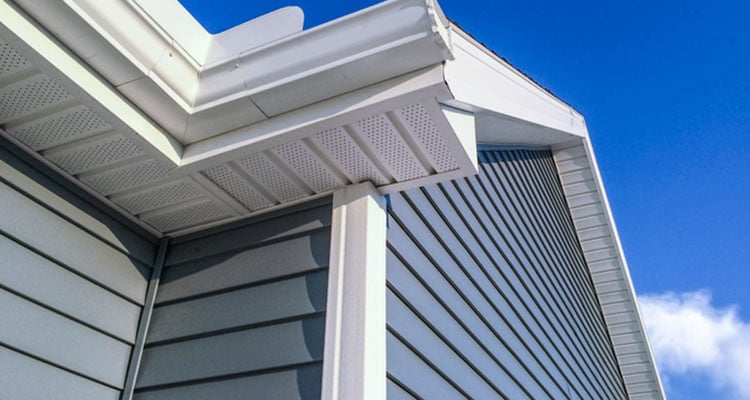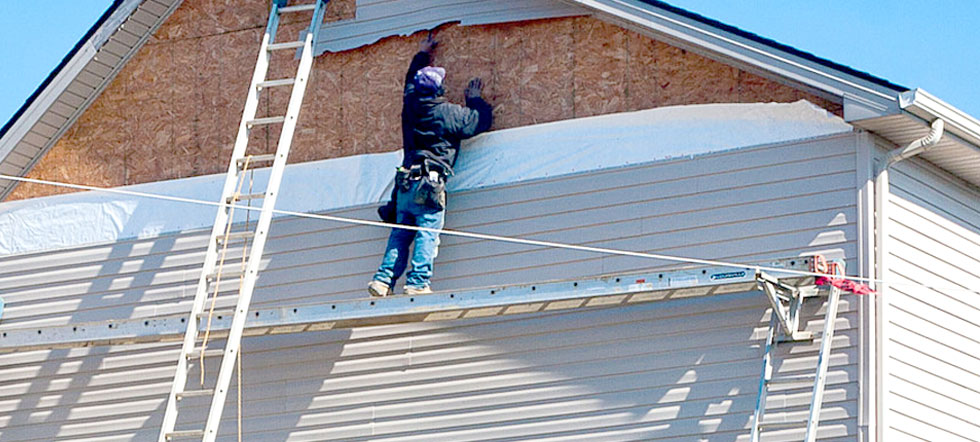Reliable Siding Installer Near Me: Optimize Your Home's Outside Prospective
Reliable Siding Installer Near Me: Optimize Your Home's Outside Prospective
Blog Article
Introducing the Relevance of Picking the Right Exterior Sidings for Long-Term Resilience
The toughness of siding materials can considerably affect the durability and total upkeep expenses of a home. Comprehending the vital factors that influence the resilience of exterior sidings is essential for making informed choices that can stand the test of time.
Elements Influencing Siding Toughness
Taking a look at the setup process is important in figuring out the aspects influencing exterior siding sturdiness. Correct installment plays a substantial duty in making certain the long life and efficiency of exterior sidings. Factors such as the usage of quality materials, experienced labor, and adherence to producer guidelines throughout installment are vital for maximizing the longevity of house sidings.
The kind of material used for home sidings is a main element affecting their toughness. Materials like plastic, fiber cement, steel, and wood have various levels of longevity and need specific upkeep methods. Additionally, direct exposure to environmental aspects such as sunlight, wetness, and severe temperatures can influence the durability of house sidings.
In addition, the quality of setup straight affects the sturdiness of house sidings. Improper installment can lead to issues like bending, fracturing, or water infiltration, compromising the structural stability of the house sidings. Hiring skilled specialists and following appropriate setup treatments are critical action in guaranteeing the sturdiness of outside home sidings.
Influence of Climate Condition
Weather condition problems dramatically affect the efficiency and long life of outside home sidings. Exposure to different climate elements such as rain, snow, hail storm, UV rays, and rising and fall temperature levels can influence the durability of sidings over time. Constant direct exposure to dampness from rainfall or snow can lead to water infiltration, causing mold and mildew, mildew, or rot growth in home sidings made of products like timber or fiber cement. Intense sunshine and UV rays can fade the shade and weaken the surface of sidings made of plastic or aluminum. Icing up temperatures followed by defrosting can result in development and contraction of sidings, leading to splits or warping.
Selecting the ideal house siding material that can hold up against the particular climate condition of a region is vital for long-term sturdiness. For locations prone to heavy rains, materials like vinyl or fiber cement that supply good moisture resistance may be preferable - siding INSTALLER near me. In regions with extreme temperature variants, sturdy products like engineered wood or metal exterior sidings might be a far better selection. Understanding the effect of climate condition on outside sidings is important in making notified decisions to make sure the durability and efficiency of the house siding financial investment.
Power Effectiveness Considerations
Given the significant duty climate conditions play in identifying the sturdiness of exterior house sidings, it is crucial to additionally think about the energy performance ramifications when selecting one of the most ideal exterior siding material for a residential or commercial property. Power effectiveness is an important factor to ponder as it directly impacts a building's home heating and cooling prices. Opting for energy-efficient siding products can add to keeping a comfy interior temperature throughout the year while possibly decreasing energy costs. Products such as shielded plastic, fiber concrete, and engineered timber home sidings offer boosted energy performance by offering dig this far better insulation for the building. These materials assist in preventing heat transfer, maintaining the indoor cooler in the summer season and warmer in the winter, which minimizes the load on heating and cooling down systems. Additionally, energy-efficient exterior sidings can additionally add to a more ecologically friendly and sustainable building by decreasing general power usage. When choosing on outside house sidings, considering their power performance can lead to lasting cost savings and a more environmentally mindful option for the building.
Upkeep Demands and Costs

Vinyl exterior siding commonly has reduced maintenance costs compared to wood or fiber cement exterior siding, as it does not call for regular paint or discoloration. It is vital to aspect in lasting upkeep prices when originally picking a siding product to ensure that the general life time expenditures straighten with your spending plan.
Longevity and Return on Investment
Comprehending the longevity of different outside home siding products is important for residential property owners looking to optimize their return on investment. Choosing a siding material with a lengthy lifespan can dramatically impact the general cost-effectiveness of a residential or commercial property.
In regards to return on investment, exterior siding materials that provide long life can enhance the value of a residential or commercial property. Potential buyers are frequently going to pay even more for a home with top quality, durable home siding that needs minimal maintenance. Furthermore, choosing a resilient home siding product can help enhance visual allure, making the residential or commercial property a lot more eye-catching to potential customers. By taking into consideration the longevity of exterior siding materials, residential property proprietors can make enlightened choices that profit them in the future.
Final Thought

The toughness of house siding products can significantly impact the durability and total upkeep prices of a building. Recognizing the influence of climate problems on outside home sidings is necessary in making notified decisions to guarantee the longevity and performance of the siding financial investment.
Given the significant duty climate conditions play in identifying the resilience of exterior house sidings, it is imperative to additionally think about the energy efficiency effects when choosing the most suitable siding material for a property. Plastic home siding usually has lower upkeep costs contrasted to wood or fiber cement blog home siding, as it does not need constant paint or staining. By very carefully thinking about these factors and picking the ideal material, building owners can maximize the longevity and return on investment of their outside siding.
Report this page